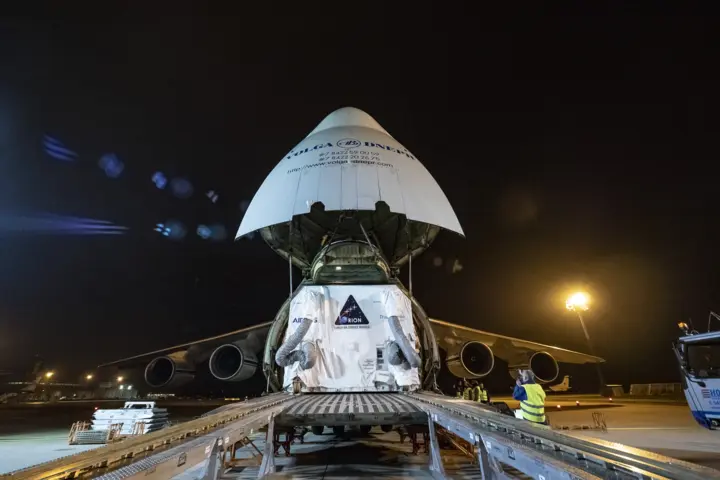Accurate monitoring of pressure surges in the fuel system
The main propulsion unit comprises a space shuttle engine combined with eight medium-sized Aerojet Rocketdyne engines and 24 small engines developed by Airbus itself. For the tests, Airbus is using a propulsion qualification model (PQM) that can function with only 12 small engines instead of the 24 in the real unit. The propulsion system for the ESM service module requires exceptionally thorough testing, because the technical equipment in the ESM that is vital to the crew's survival is located directly adjacent to it: a malfunction in space would have fatal consequences. The PQM test module itself is not intended for space flights, but is purely a test model that should supply precise information about the functionalities of the complex technology in different environments.
Pressure surges in the fuel valves represent a particular source of hazards, so they must be examined down to the last detail in advance. These pressure surges are caused by the water hammer effect, also known as the Joukowski head. This involves pressure surges of about one millisecond that occur with extreme rapidity in liquid fuel whenever a valve is opened or closed. The faster the valves open or close, the stronger the pressure surge will be. These changes in pressure must not be allowed to exceed a defined limit, because excessive pressure surges can damage the pipelines or other critical components. An explosion could even occur in the worst-case scenario, because rapid compression can cause the hydrazine rocket fuel to ignite.
To prevent this, and to enable precise adjustment of the valve system, Airbus uses piezoelectric pressure sensors from Kistler in its tests. A total of 40 type 601C BA 00070.0 sensors are installed in the propulsion qualification model. This exceptionally resilient sensor delivers reliable and highly accurate information in the temperature range from –196°C to 350°C. It also covers a measurement range of 0 to 70 bar. Thanks to Integrated Electronics Piezo Electric (IEPE) technology, this model performs its function without an additional charge amplifier. In terms of the measurement setup, this means that the data is transmitted as a voltage signal, together with the power supply, via a regular coaxial cable. The sensor's small dimensions – it has a diameter of only 5.5 millimeters – make it especially suitable for use in rocket engines: the sensors are located inside the propulsion equipment, upstream and downstream of the valves, to monitor rapid changes in pressure. The engineers use the measurements to validate their calculations and ensure that the limits are never exceeded in any case. They can implement adaptations if necessary.
Flying to the moon – thanks to reliable measurement results
Airbus has delivered the PQM, including the sensor technology, to the USA where NASA is carrying out further trials on the test module. Meanwhile, the engineers and technicians in Bremen are already working on a second ESM, because the actual service module can only be used once in space. Airbus Defence & Space has already ordered ten additional pressure sensors for further tests on the small Airbus engines. In the future too, the company intends to put its trust in sensor technology and know-how supplied by Kistler.
"Especially in manned space flight, it's essential to carry out tests in advance to provide 100% certainty that everything will go according to plan during a real flight. For that reason, it's important to have the support of a partner who is an absolute expert in the field of sensor technology and measurement data processing."
Florian Hasenknopf, PQM Test Engineer at Airbus D&S
Kistler also takes a positive view of the ongoing collaboration. 'We're very proud that our sensors are playing a key part in the safety of manned space flight,' according to Ricardo Rodrigo, Product Manager Pressure Sensors at Kistler.






![Airbus [object Object]](https://kistler.cdn.celum.cloud/SAPCommerce_Document_Preview/961-294e.webp)